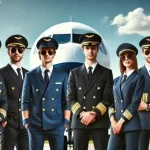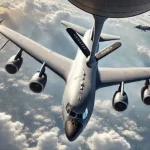So, you’ve caught the flying bug. Maybe it was a smooth landing you watched from the terminal window, or the rumble of jet engines as a Boeing took off overhead. Whatever sparked your interest—welcome to aviation! Becoming a pilot is one of the most thrilling, challenging, and rewarding journeys you can take. This guide breaks it all down, step by step, with real-world insight and advice.
🧭 Step 1: Choose Your Pilot Path
Before taking off, decide what kind of pilot you want to be:
| Type of Pilot | Goal | Can You Be Paid? |
|---|---|---|
| Private Pilot (PPL) | Recreational flying, hobbyist | ❌ |
| Commercial Pilot (CPL) | Career flying, paid flying gigs | ✅ |
| Airline Transport Pilot (ATP) | Airline captain/co-pilot | ✅ |
| Sport/Recreational Pilot | Ultralight or small plane flying | ❌ (limited) |
💡 Most career pilots start with a Private Pilot License (PPL) and build from there.
🩺 Step 2: Pass a Medical Exam
You must pass an FAA-approved medical exam before flying solo.
| Medical Class | Needed For | Validity (Under 40) |
|---|---|---|
| First-Class | Airline Transport Pilot | 12 months |
| Second-Class | Commercial Pilot | 12 months |
| Third-Class | Private Pilot | 60 months |
You’ll need to visit an AME (Aviation Medical Examiner). Use the FAA AME locator to find one near you.
🏫 Step 3: Find a Flight School
There are two types of schools:
- Part 61: Offers greater flexibility, typically offered by smaller schools, and well-suited for those training on a part-time schedule.
- Part 141: Structured, faster pace, often for full-time students or career paths.
Part 61 vs Part 141 Flight Schools
- Part 61 schools offer flexible, self-paced training—ideal for part-time students or those with unpredictable schedules.
- Part 141 schools follow a structured syllabus approved by the FAA, often allowing students to complete training in fewer flight hours, making them popular for full-time, career-focused students.
What to look for:
- Certified instructors (CFIs)
- Well-maintained aircraft
- Transparent pricing
- Good student reviews
- Location with favorable flying weather
Use the FAA Flight School Directory to search.
📘 Step 4: Start Ground School
Ground school teaches aviation theory: weather, airspace, aircraft systems, regulations, navigation, etc.
You can choose:
- In-person classes at your flight school
- Online platforms like Sporty’s, Gleim, or King Schools
Once you’re ready, take the FAA Knowledge Test—a 60-question multiple-choice exam.
Here is a guideline from FAA for knowledge test. Download from the link.
🛫 Step 5: Begin Flight Training
Flight training is where the real fun begins! You’ll fly with an instructor (CFI) and eventually solo.
| Flight Hours (Minimums) |
|---|
| Private Pilot: 40 hrs (avg: 60–70 hrs) |
| Commercial Pilot: 250 hrs total time |
| ATP License: 1,500 hrs total time |
Your training will include:
- Takeoffs and landings
- Cross-country flights
- Night flying (for PPL+)
- Emergency procedures
- Instrument training (for advanced ratings)
🎯 Step 6: Pass the Checkride
After your instructor determines you’re ready, you’ll undergo a practical exam—commonly called a “checkride”—administered by a Designated Pilot Examiner (DPE).
It includes:
- An oral exam
- A flight test
Pass both, and congrats! You’re a licensed pilot.
💸 Costs of Becoming a Pilot (USD Estimate)
| License | Approximate Cost |
|---|---|
| Private Pilot (PPL) | $10,000–$18,000 |
| Instrument Rating | $8,000–$12,000 |
| Commercial Pilot | $30,000–$45,000 |
| CFI/CFII (Instructing Certs) | $5,000–$10,000 |
| ATP Certificate | Varies (often part of airline programs) |
Total to Airline Job: ~$70,000–$100,000 (if done privately)
💡 Many future airline pilots become flight instructors to build hours and earn income.
🧠 Bonus: Career Track to the Airlines
- PPL → IR (Instrument) → CPL → CFI/CFII
- Build time to 1,500 hours (many become instructors or do banner towing, aerial survey, etc.)
- Complete ATP and join a regional airline
- Build turbine time → apply to major airlines like Delta, United, Emirates, etc.
💼 Pilot Salary in 2025 (USA)
| Role | Average Pay |
|---|---|
| Regional FO (First Officer) | $55,000–$85,000 |
| Regional Captain | $80,000–$120,000 |
| Major Airline FO | $120,000–$200,000 |
| Major Airline Captain | $250,000–$400,000+ |
Source: Airline pilot job boards, union agreements, industry averages.
🚀 Final Thoughts
Becoming a pilot isn’t easy. It takes time, money, commitment—and a real love for the sky. But if that’s what drives you, then don’t let anything stop you. The journey is worth every early morning, every hour in the air, and every ounce of effort.
The sky is not the limit. It’s your home.



